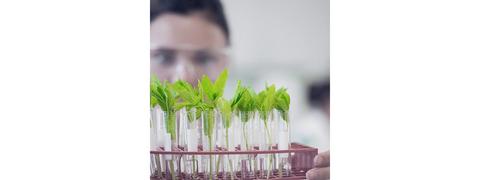Concepts and principles of Homoeopathy

Hippocrates (460 BC – 370 BC), the father of medicine, had insisted that the physician has to study the patient, not just illness. In treating patients, he should do everything to assist the nature, the great healer, to affect cure. He advocated similimum. Rig Veda, the source book from which ayurveda originated, states that ‘a cure for poison lies in the poison itself’. It was by an accident that the German physician Dr. Christian Friedrich Samuel Hahnemann came across a similar statement by Dr. Cullen that the Cinchona bark’ decoction (which helps to relieve the symptoms of malaria) causes intermittent fever in healthy persons. To understand the effects of Cinchona bark in intermittent fevers, Hahnemann experimented on his own self. Intake of Cinchona resulted in occurrence of condition simulating intermittent fevers. This effect that Cinchona bark produced on him gave birth to the idea of homoeopathy. Hahnemann continued to experiment on himself and on others, close to him, noting that every substance he took produced definite distinct symptoms. He further noted that no two substances produced, exactly the same set of symptoms. Each substance provoked its own unique pattern of symptoms, both on physical and mental plane. At first, Hahnemann tested substances commonly used as medicines in his time (such as Antimony and Rhubarb) and also, poisons like Arsenic and Belladonna. To avoid harmful effects from normal doses of the substances he diluted each medicine until he reached the greatest dilution that would still produce a response. These experiments were called provings and led him to observe and describe the basic principles of homoeopathic medicine. One can observe the similarity of basic concepts of homoeopathy for curing diseases with Hippocrates’s statement and the Rig Veda. Dr. Hahnemann today is considered as father of experimental pharmacology and father of homoeopathy.
According to World Health Organisation, homoeopathy is the second largest system of medicine in the world. The etymological origin of the word homoeopathy, which means ‘Similar sufferings’, is from Greek words hómoios (similar) and páthos (suffering). Homoeopathy is also spelled as Homœopathy and Homeopathy. As per the primary principle of Homoeopathy, the ‘Law of Similars’ or the ‘natural law of healing’, diseases are treated by medicines, which are capable of producing symptoms similar to those of the disease in healthy persons. The term "homoeopathy" was coined by Dr. Hahnemann himself and first appeared in print in 1807. The term allopathy was also coined by him to differentiate homoeopathy.
Key concepts of homoeopathy include (i) homoeopathy seeks to stimulate the body's defense mechanisms and processes so as to prevent or treat illness, (ii) treatment involves giving very small doses of substances called remedies that, according to homoeopathy, would produce the same or similar symptoms of illness in healthy people if they were given in larger doses and (iii) treatment in homoeopathy is individualized (tailored to each person). Homoeopathic practitioners select remedies according to a total picture of the patient, including symptoms, lifestyle, emotional and mental states, and other factors.
Homeopathy in India
This therapeutic system came to be practiced in India during the life time of Dr. Hahnemann, the father of Homoeopathy. Dr. Mahendra Lal Sircar, was the first qualified physician in India who was inspired by the favour of lay-homoeopath Babu Rajen Datta, who himself practiced homoeopathy and treated successfully many patients, some of whom were distinguished men of the time such as Pandit Iswar Chandra Vidyasagar, Raja Radha Kanta Deb Bahadur. Later Dr. Mahendra Lal Sircar was instrumental in spreading the prestige and fame of homoeopathy far and wide in India. Ultimately more and more people started taking homoeopathic treatment for various diseases.
In view of the fact that treatment by the system of Homoeopathy is restored to by many people, a resolution was moved and adopted in the Parliament of India in 1948 to regulate the teaching, registration and practice. Subsequently the Government of India appointed a Homoeopathic Enquiry Committee in 1948, and the Committee submitted a report in 1949. There were several enactments regulating homoeopathy by State Governments. Government of India recognised homoeopathy as a system of medicine at par with other systems of medicine in 1962. The above Committee had also recommended that Central Council of Homoeopathic Medicine should be established. Following that, the Homoeopathic Central Council Bill as recommended by the Joint Committee was passed by both the houses of Parliament and was given assent to by the President of India on 17th December, 1973. There after Homoeopathic Pharmacopoeia Laboratory was established in 1975 and Central Council for Research in Homoeopathy was established in 1979.
India today has largest number of homoeopaths (over 2 lacs) compared to any other country. There are over 180 homoeopathic medical colleges in India, offering basic degree BHMS with 5½ years duration and 7 post-graduate courses with the specialities like materia medica, organon, repertory, homoeopathic pharmacy, practice of medicine, paediatrics and psychiatry. As per reports about 40-50 million people opted for homoeopathy in 2006-07 and according to a forecast the number would exceed to 100 million by 2010. Supplies of medicines to growing demand are met by physicians as well as pharmacists. Homoeopathy is second most sought after system of medicine in India.
